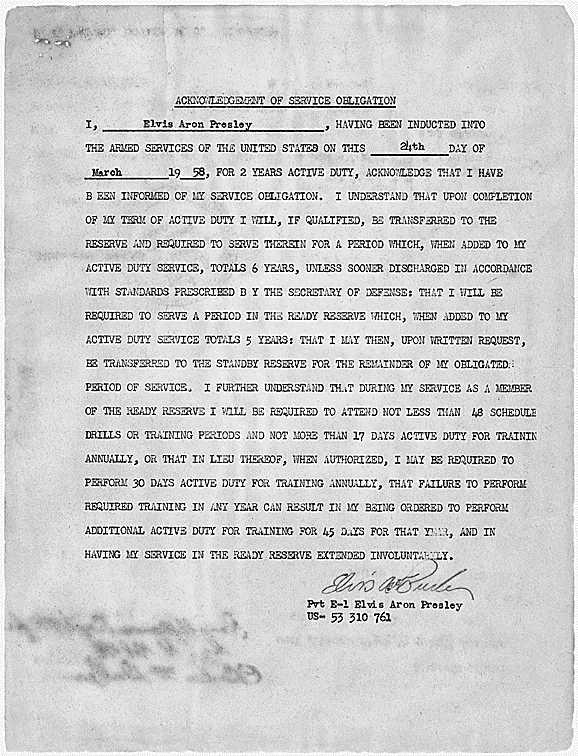
You’re welcome to send your Live Wire news tips or suggestions to [email protected].
Today’s Live Wire: Quick Links
- Friday Breaking: Wreck on I-95
- States Pass Budget Pain to Cities
- NASA Ordered to Waste $1.4 Million a Day
- Health Reform’s Falsehood Anniversary
- How Ignorant Are You?
- Toby on Living With Nukes
- Israel’s Goodbye to Peace
- The FBI’s Anthrax Killer
- Paris Without People
- Winter of Our lesbian Content
- Google Goes Gaga
- Elizabeth Taylor on What’s My Line
- When Elvis Went Army
- Julian Schnabel, Painter
- A Few Good Links
![]()
Live Wire Rewinds
![]()
Breaking Friday: Fatality and Back-up on I-95
The Florida Highway Patrol is reporting a wreck and a fatality at mile marker 276 southbound on I-95, some two miles south of Old Dixie Road, just inside the Volusia County Line. Readers are reporting severe backups into Flagler County. Details here.
Buck-Passing: States Pass Budget Pain to Cities

From The Times: “The state budget squeeze is fast becoming a city budget squeeze, as struggling states around the nation plan deep cuts in aid to cities and local governments that will almost certainly result in more service cuts, layoffs and local tax increases. The cuts are widespread. Ohio plans to slash aid to Columbus, Cleveland, Cincinnati and other cities and local governments by more than a half-billion dollars over the next two years under the budget proposed last week by its new Republican governor, John R. Kasich. Nebraska passed a law this month eliminating direct state aid to Omaha and other municipalities. The governors of Wisconsin and Michigan have called for sending less money to Milwaukee, Detroit and other local governments. And it is not only Republicans who are cutting aid to cities: Gov. Andrew M. Cuomo of New York, a Democrat, decided not to restore $302 million in aid to New York City that was cut last year, while Gov. Deval Patrick of Massachusetts, another Democrat, has called for cutting local aid to Boston and other cities by some $65 million. Some mayors said the proposed cuts could force them to raise local property taxes, even as many homeowners complain that they are already overtaxed. Many are combing through their budgets, looking to wring out more savings where they can. Libraries may close. Garbage collection could be curtailed. Potholes might linger a bit longer. Some warned that they could be forced to lay off more city workers, including police officers and firefighters. […] The reductions in state aid, along with falling property tax revenues that are finally catching up with lower home values, are major sources of fiscal stress for many cities. Ben S. Bernanke, the Federal Reserve chairman, said in a speech this month that “many localities have been hard hit by reductions in state aid, which in 2008 accounted for about 30 percent of local revenues.” And Moody’s Investors Service, the ratings agency, said in a report last week that many states “are increasingly pushing down their problems to their local governments.” The Moody’s report warned that this would be “the toughest year for local governments since the economic downturn began.” The cuts are a vivid illustration of a fact of fiscal life: budgetary pain flows downhill. Although state tax collections are finally improving again after the longest and deepest decline on record, they remain well below their prerecession levels. Stimulus money from Washington, which helped keep many states afloat over the last two years, is drying up. So states facing large deficits are proposing cuts in local aid.” The full story.
See Also:
- As County Health Departments Brace For Cuts in Vital Services, Flagler’s Makes Its Case
- How Grim Are State School Spending Cuts? Try 7 to 10% Per Student, Layoffs to Follow
- Children as Billboards: From School Buildings to Buses, a Lunge for Ads and Revenue
- Economic Development Set Punts Again to More Meetings, Postponing Hard Questions
- Palm Coast Largely Rejects County’s Economic Development Track, Including New Tax
NASA Ordered to Waste $1.4 Million a Day on Defunct Program
 From the Orlando Sentinel: “Congress has again failed to rid a temporary spending bill of language forcing NASA to waste $1.4 million a day on its defunct Constellation moon program. Though Congress passed a new stopgap spending bill last week, the measure retained a leftover provision from the 2010 budget that bars the agency from shutting down Constellation, which Congress and the White House agreed to cancel last October. This so-called “Shelby provision” — named for U.S. Sen. Richard Shelby, R-Alabama, who inserted it into the 2010 budget — is expected to cost NASA roughly $29 million during the three-week budget extension through April 8. It has already cost the agency nearly $250 million since Oct. 1. Equally galling to budget hawks is that Congress has known about the mistake for months and has done nothing to correct it. […] In January, NASA Inspector General Paul Martin urged “immediate action” to stop the spending on Constellation, much of which goes to Utah-based solid-rocket manufacturer ATK. Martin said it would cost an estimated $215 million through the end of February. Since then, though, Congress has passed two “continuing resolutions” — each with the Shelby language. […] Industry and congressional sources attributed the failure to the fact that the amount of money involved simply wasn’t enough to attract the attention of congressional leaders. “Maybe $1 million a day isn’t a big deal when you have a $1.6 trillion [federal] deficit,” said Thomas Schatz, president of Citizens Against Government Waste, a non-partisan budgetary watchdog. But, he added, that’s “not the kind of decision any normal organization would make.” The full story.
From the Orlando Sentinel: “Congress has again failed to rid a temporary spending bill of language forcing NASA to waste $1.4 million a day on its defunct Constellation moon program. Though Congress passed a new stopgap spending bill last week, the measure retained a leftover provision from the 2010 budget that bars the agency from shutting down Constellation, which Congress and the White House agreed to cancel last October. This so-called “Shelby provision” — named for U.S. Sen. Richard Shelby, R-Alabama, who inserted it into the 2010 budget — is expected to cost NASA roughly $29 million during the three-week budget extension through April 8. It has already cost the agency nearly $250 million since Oct. 1. Equally galling to budget hawks is that Congress has known about the mistake for months and has done nothing to correct it. […] In January, NASA Inspector General Paul Martin urged “immediate action” to stop the spending on Constellation, much of which goes to Utah-based solid-rocket manufacturer ATK. Martin said it would cost an estimated $215 million through the end of February. Since then, though, Congress has passed two “continuing resolutions” — each with the Shelby language. […] Industry and congressional sources attributed the failure to the fact that the amount of money involved simply wasn’t enough to attract the attention of congressional leaders. “Maybe $1 million a day isn’t a big deal when you have a $1.6 trillion [federal] deficit,” said Thomas Schatz, president of Citizens Against Government Waste, a non-partisan budgetary watchdog. But, he added, that’s “not the kind of decision any normal organization would make.” The full story.
See Also:
Health Reform’s Falsehood Anniversary
 From Politifact: “One year ago today, President Barack Obama signed the Patient Protection and Affordable Care Act into law, ending a knock-down, drag-out political fight that lasted more than a year. If anyone thought the law’s passage would end distortions about the health care law, they were seriously mistaken. We’ve conducted more than 400 separate fact-checks on health care since 2007, including more than 150 since the law was signed in 2010. Today, to mark the law’s one-year anniversary, we’re highlighting 10 of the most significant falsehoods we’ve checked about the health care law in the past year. Under the new health care law, “all real estate transactions will be subject to a 3.8% Sales Tax.” False. Starting in 2011, “you will be required to pay taxes” on “the value of whatever health insurance you are given by the company.” False. Those who fail to buy health insurance under “Obamacare” face the threat of jail time. False. Under the new health care law, “the first person (a) patient has to go to is a bureaucrat. That is called a panel.” False. See many more distortions and corrections.
From Politifact: “One year ago today, President Barack Obama signed the Patient Protection and Affordable Care Act into law, ending a knock-down, drag-out political fight that lasted more than a year. If anyone thought the law’s passage would end distortions about the health care law, they were seriously mistaken. We’ve conducted more than 400 separate fact-checks on health care since 2007, including more than 150 since the law was signed in 2010. Today, to mark the law’s one-year anniversary, we’re highlighting 10 of the most significant falsehoods we’ve checked about the health care law in the past year. Under the new health care law, “all real estate transactions will be subject to a 3.8% Sales Tax.” False. Starting in 2011, “you will be required to pay taxes” on “the value of whatever health insurance you are given by the company.” False. Those who fail to buy health insurance under “Obamacare” face the threat of jail time. False. Under the new health care law, “the first person (a) patient has to go to is a bureaucrat. That is called a panel.” False. See many more distortions and corrections.
See Also:
- Medicaid Changes For 2.9 Million Floridians: Fewer Choices, More HMOs
- Unconstitutional Mandate: Florida Judge Calls for Repeal of Entire Health Care Law
- Reality Check: The GOP’s Straw-Stuffing Health Care Repeal
- Nine Ways Health Care Reform May Affect You in 2011 BB (Before Boehner)
- Sarah Palin Is Wrong: We Need “Death Panels”

From Newsweek: “They’re the sort of scores that drive high-school history teachers to drink. When Newsweek recently asked 1,000 U.S. citizens to take America’s official citizenship test, 29 percent couldn’t name the vice president. Seventy-three percent couldn’t correctly say why we fought the Cold War. Forty-four percent were unable to define the Bill of Rights. And 6 percent couldn’t even circle Independence Day on a calendar. Don’t get us wrong: civic ignorance is nothing new. For as long as they’ve existed, Americans have been misunderstanding checks and balances and misidentifying their senators. And they’ve been lamenting the philistinism of their peers ever since pollsters started publishing these dispiriting surveys back in Harry Truman’s day. (He was a president, by the way.) According to a study by Michael X. Delli Carpini, dean of the Annenberg School for Communication, the yearly shifts in civic knowledge since World War II have averaged out to “slightly under 1 percent.” […] In March 2009, the European Journal of Communication asked citizens of Britain, Denmark, Finland, and the U.S. to answer questions on international affairs. The Europeans clobbered us. Sixty-eight percent of Danes, 75 percent of Brits, and 76 percent of Finns could, for example, identify the Taliban, but only 58 percent of Americans managed to do the same—even though we’ve led the charge in Afghanistan. It was only the latest in a series of polls that have shown us lagging behind our First World peers. […] For more than two centuries, Americans have gotten away with not knowing much about the world around them. But times have changed—and they’ve changed in ways that make civic ignorance a big problem going forward. While isolationism is fine in an isolated society, we can no longer afford to mind our own business. What happens in China and India (or at a Japanese nuclear plant) affects the autoworker in Detroit; what happens in the statehouse and the White House affects the competition in China and India. Before the Internet, brawn was enough; now the information economy demands brains instead.
“The current conflict over government spending illustrates the new dangers of ignorance. Every economist knows how to deal with the debt: cost-saving reforms to big-ticket entitlement programs; cuts to our bloated defense budget; and (if growth remains slow) tax reforms designed to refill our depleted revenue coffers. But poll after poll shows that voters have no clue what the budget actually looks like. A 2010 World Public Opinion survey found that Americans want to tackle deficits by cutting foreign aid from what they believe is the current level (27 percent of the budget) to a more prudent 13 percent. The real number is under 1 percent. A Jan. 25 CNN poll, meanwhile, discovered that even though 71 percent of voters want smaller government, vast majorities oppose cuts to Medicare (81 percent), Social Security (78 percent), and Medicaid (70 percent). Instead, they prefer to slash waste—a category that, in their fantasy world, seems to include 50 percent of spending, according to a 2009 Gallup poll.” The full story.
See Also:
- Citizenship Test Website
- U.S. Citizenship Test: When Even the Federal Government Doesn’t Know the Right Answers
- Proudest Moment on a Gray Day: On Becoming an American
Toby Tobin on Living In the Shadow of a Nuclear Plant
 From GoToby: “I grew up in Ontario, N.Y., a small town along the shore of Lake Ontario, 20 miles east of Rochester. There were only 66 students in my 1961 graduating class; the school district included two towns. We were so small we couldn’t afford a football team. But since 1970, Ontario has had an operating nuclear power plant. The Robert E. Ginna Nuclear Power Plant was originally built by Rochester Gas & Electric. It’s now owned by Constellation Energy. Over a period of years, I lived in two separate homes only a few miles downwind from Ginna. Hardly anyone paid much attention to the plant itself or to the several warning sirens located around town. Frequent tests of the warning system were comforting. The most noticeable impact of the plant was its impact on local property taxes. I recall that when built, the plant accounted for more than half the town’s total taxable value. I think I remember Ontario’s taxes being about half those of adjoining towns. For years, the town and the school district thrived as the town transitioned from a rural farming community to a great place for Rochester workers to live. Real estate was made more attractive by lower property taxes. The much larger school district now boasts a football team.
From GoToby: “I grew up in Ontario, N.Y., a small town along the shore of Lake Ontario, 20 miles east of Rochester. There were only 66 students in my 1961 graduating class; the school district included two towns. We were so small we couldn’t afford a football team. But since 1970, Ontario has had an operating nuclear power plant. The Robert E. Ginna Nuclear Power Plant was originally built by Rochester Gas & Electric. It’s now owned by Constellation Energy. Over a period of years, I lived in two separate homes only a few miles downwind from Ginna. Hardly anyone paid much attention to the plant itself or to the several warning sirens located around town. Frequent tests of the warning system were comforting. The most noticeable impact of the plant was its impact on local property taxes. I recall that when built, the plant accounted for more than half the town’s total taxable value. I think I remember Ontario’s taxes being about half those of adjoining towns. For years, the town and the school district thrived as the town transitioned from a rural farming community to a great place for Rochester workers to live. Real estate was made more attractive by lower property taxes. The much larger school district now boasts a football team.
I was living there in January 1982 when a small amount of radioactive steam leaked into the air after a steam-generator tube ruptured. The leak which lasted 93 minutes led to the declaration of a site emergency but no local evacuations. We were concerned, but our concerns were short-lived.” The full post.
See Also:
- Oldest US nuclear reactor ‘disaster waiting to happen’
- Disaster Ready? 5 Nuclear Reactors in Florida, 3 Of Them Within 180 Miles of Palm Coast
- Nuclear’s Glowing, False New Dawn
 Ari Shavit in Haaretz: “With the Syrian masses rebelling against him, there is no chance that Assad will gamble on peace. The Assad of 2011 lacks the legitimacy to negotiate for peace. The Assad of 2011 lacks the minimal maneuvering room needed to make peace. Even if he wanted peace when he was young, it’s too late now. There’s no chance that the Syrian dictator will carry out a Sadat-like peace move in the next year or two. Say farewell to peace with Palestine. Those who believe, like the writer of these lines, in the necessity of the two-state solution cannot close their eyes to what is happening. With the great Arab revolt sweeping up Palestinian Authority President Mahmoud Abbas, there is no chance that he will pay the price needed to reach peace. […] Sooner or later, the Arab revolt will reach the territories. When the expectation of a Palestinian state blows up in September, economic prosperity will not stave off a political tsunami. It’s impossible to know whether the scenario will be that of Tunisia, Egypt or the first intifada. But in any event, the quiet we have enjoyed is now being shattered. A torrent of rebellion will strike Israel. […] On the other hand, there is also no longer any option of deploying force against the rebellious masses. The occupation is even more dangerous than it was. The settlements are even more delusional than they were. The status quo has become a firetrap, and all the familiar ways of escaping it have been blocked.” The full column.
Ari Shavit in Haaretz: “With the Syrian masses rebelling against him, there is no chance that Assad will gamble on peace. The Assad of 2011 lacks the legitimacy to negotiate for peace. The Assad of 2011 lacks the minimal maneuvering room needed to make peace. Even if he wanted peace when he was young, it’s too late now. There’s no chance that the Syrian dictator will carry out a Sadat-like peace move in the next year or two. Say farewell to peace with Palestine. Those who believe, like the writer of these lines, in the necessity of the two-state solution cannot close their eyes to what is happening. With the great Arab revolt sweeping up Palestinian Authority President Mahmoud Abbas, there is no chance that he will pay the price needed to reach peace. […] Sooner or later, the Arab revolt will reach the territories. When the expectation of a Palestinian state blows up in September, economic prosperity will not stave off a political tsunami. It’s impossible to know whether the scenario will be that of Tunisia, Egypt or the first intifada. But in any event, the quiet we have enjoyed is now being shattered. A torrent of rebellion will strike Israel. […] On the other hand, there is also no longer any option of deploying force against the rebellious masses. The occupation is even more dangerous than it was. The settlements are even more delusional than they were. The status quo has become a firetrap, and all the familiar ways of escaping it have been blocked.” The full column.
See Also:
Those Anthrax Letters: The FBI’s Killer
 From McClatchy: “The late Army microbiologist Bruce Ivins engaged in a decades-long pattern of “concealment and deceit,” pretending to be a comical juggler who played the organ in church on Sundays, while his dark side drove him to mail anthrax-laced letters that killed five people, according to an analysis of his psychiatric records. The conclusion by a nine-member panel of psychiatric and forensic experts in an unusual 285-report released Wednesday lent support to the FBI’s controversial finding that Ivins was the culprit in the infamous 2001 anthrax attacks made after Ivins’ 2008 suicide. […] Information in Ivins’ psychiatric records should have kept him from ever being hired by the U.S. Army’s Medical Research Institute of Infectious Diseases at Fort Detrick, Md., where he performed research for years on deadly anthrax spores, the behavioral analysis panel found. But managers who hired him didn’t ask for them. In addition to the deaths, the anthrax powder in letters sent to two U.S. senators and media outlets in New York and Washington sickened 17 people, disrupted the U.S. Postal Service, tainted the mail in agencies across Washington and shuttered Congress. The 62-year-old scientist killed himself in July 2008 by taking an overdose of Tylenol and other drugs after federal prosecutors notified him that he’d face criminal prosecution, culminating a long investigation. […] The behavioral analysis panel found that Ivins was motivated to send the anthrax letters by “a lifelong preoccupation” with seeking revenge against “various perceived enemies,” by the need to elevate the significance his work to develop a new anthrax vaccine and by a desire to protect his assignment at Fort Detrick. Democratic U.S. Sens. Patrick Leahy of Vermont and Tom Daschle of South Dakota, whose offices got anthrax letters, “had directly incurred his wrath,” the panel wrote. […] The panel traced Ivins’ need for constant mental health care over the years to a traumatic childhood in which his mother stabbed and beat his father, threatening to kill him with a loaded gun. “It also appears that she physically abused Dr. Ivins as a boy, and that his father mocked him publicly,” the panel said. […] In early 2010, apparently after the expert panel secretly submitted its report to the court, the FBI formally closed one of the largest investigations in its history, electing to publicly declare Ivins’ guilt based on circumstantial evidence. The FBI’s case has since been called into question by a National Academy of Sciences panel, which found that the scientific evidence didn’t solely point to a flask in Ivins’ laboratory, and by scientists who worked with him at Fort Detrick who insist he couldn’t have done it. At the request of several members of Congress, the Government Accountability Office is conducting a separate inquiry.” The full story.
From McClatchy: “The late Army microbiologist Bruce Ivins engaged in a decades-long pattern of “concealment and deceit,” pretending to be a comical juggler who played the organ in church on Sundays, while his dark side drove him to mail anthrax-laced letters that killed five people, according to an analysis of his psychiatric records. The conclusion by a nine-member panel of psychiatric and forensic experts in an unusual 285-report released Wednesday lent support to the FBI’s controversial finding that Ivins was the culprit in the infamous 2001 anthrax attacks made after Ivins’ 2008 suicide. […] Information in Ivins’ psychiatric records should have kept him from ever being hired by the U.S. Army’s Medical Research Institute of Infectious Diseases at Fort Detrick, Md., where he performed research for years on deadly anthrax spores, the behavioral analysis panel found. But managers who hired him didn’t ask for them. In addition to the deaths, the anthrax powder in letters sent to two U.S. senators and media outlets in New York and Washington sickened 17 people, disrupted the U.S. Postal Service, tainted the mail in agencies across Washington and shuttered Congress. The 62-year-old scientist killed himself in July 2008 by taking an overdose of Tylenol and other drugs after federal prosecutors notified him that he’d face criminal prosecution, culminating a long investigation. […] The behavioral analysis panel found that Ivins was motivated to send the anthrax letters by “a lifelong preoccupation” with seeking revenge against “various perceived enemies,” by the need to elevate the significance his work to develop a new anthrax vaccine and by a desire to protect his assignment at Fort Detrick. Democratic U.S. Sens. Patrick Leahy of Vermont and Tom Daschle of South Dakota, whose offices got anthrax letters, “had directly incurred his wrath,” the panel wrote. […] The panel traced Ivins’ need for constant mental health care over the years to a traumatic childhood in which his mother stabbed and beat his father, threatening to kill him with a loaded gun. “It also appears that she physically abused Dr. Ivins as a boy, and that his father mocked him publicly,” the panel said. […] In early 2010, apparently after the expert panel secretly submitted its report to the court, the FBI formally closed one of the largest investigations in its history, electing to publicly declare Ivins’ guilt based on circumstantial evidence. The FBI’s case has since been called into question by a National Academy of Sciences panel, which found that the scientific evidence didn’t solely point to a flask in Ivins’ laboratory, and by scientists who worked with him at Fort Detrick who insist he couldn’t have done it. At the request of several members of Congress, the Government Accountability Office is conducting a separate inquiry.” The full story.
See Also:
From Open Culture: Luke Shepard, a student at the American University of Paris, began working on Le Flaneur as part of a project for school, but it quickly took on a life of its own. He used a Nikon D90 DSLR camera to take over 2,000 photos of Paris at night, and then used Adobe After Effects and Premiere Pro to produce this impressive tour of a world that most of us rarely see – Paris without Parisians. In English, “flaneur” translates roughly as “stroller,” “loafer,” or perhaps “aimless walker,” and, in an interview with National Geographic Traveler, Shepard explained that he was inspired to shoot these images in part by late-night pleasure rides on his bicycle. (Note: Some viewers may prefer to watch with the volume off, as the chase scene-ready soundtrack detracts a bit from the eerie sense of a virtually deserted city.)
Le Flâneur (music by The XX) from Luke Shepard on Vimeo.
See Also:
- Picasso at Work
- Guggenheim Shortlist Video: “The Fuchsia Fits”
- Color Splash from Hollingsworth To the Art League
- Beauty Blast: Every Painting at MoMA
The Winter of Our Lesbian Content: Glee, Skins & Pretty Little Liars

From Austostraddle: “Remember that beautiful week — when was it? It seems like so long ago. Was it only two weeks ago? Were we ever so young? Were we ever so teary-eyed and wet-pantsed and surprised and shocked and touched and awed and optimistic about everything in the whole wide world? Reader: we were. And we had reason to be. You couldn’t fly a crop-duster through a Burbank backlot without hitting the head of a lesbian/queer/bif-ckingcurious storyline. Now that your triweekly serving of Lez is officially over (for the time being) and we still don’t know who A. is or which conventionally attractive lesbian Emily will take to next year’s Winterdeath Ball or whatever it was, it’s time to look back on the season that was. It’s time to dwell excessively upon the clear-pored Sapphic or semi-Sapphic humans who graced the screen of my laptop this past winter (because I don’t have a teevee, but you probably do, so this might just feel totally different for you than it does for me).” The full post.
From Googleblog: “Google went totally Gaga yesterday, when the indomitable artist otherwise known as Stefani Germanotta clicked onto the Mountain View, Calif. campus in her impossibly tall black boots. The diminutive superstar wowed a capacity crowd in a venue that was (literally) packed to the rafters with adoring Googlers. In a wide-ranging interview that saw Gaga taking questions from fans via Twitter and Moderator, the musician spoke about everything from bullying to Rebecca Black, the creative process and her upcoming album. She took questions from the audience—hugging several Googlers in the process—and even became a judge when a gaggle of Gaga-alikes flooded the stage. True to form, the singer was by turns funny, thoughtful and inspiring.” Watch:
Video: Elizabeth Taylor on What’s My Line
Seems not recognizing her one way or another would be a sin.
See Also:
National Archives: When Elvis Went Army
From the National Archives: Acknowledgement of service obligation signed by Elvis Presley on March 24, 1958, to indicate that he understands that his total service obligation (both active and reserve) is 6 years, 03/24/1958 (ARC Identifier: 299792);, Official Military Personnel File of Elvis A. Presley, ca. 1958 – ca. 1960.

See Also:
 From Art in America: “It might seem absurd to describe Julian Schnabel as neglected, given his great celebrity, his flourishing career as a film director, and his near-mythic status as a 1980s art star, but for more than 20 years his paintings have been passed over in silence by most critics and largely ignored by curators. His paradox is to be at once highly visible as a cultural figure and deeply invisible as a painter. Some of this invisibility is the result of his being dismissed by influential academic theorists as a mere resuscitator of modernist styles in an outmoded medium. Another factor has been the unexpected success of his films, which has drawn attention away from his activity as a painter; the meme “His movies are better than his paintings” has flourished almost since the release of his first film, Basquiat (1996). A balanced assessment of Schnabel’s achievement has been hampered by the difficulty of seeing his work in depth. Astonishingly, Schnabel has not been given a museum exhibition in the U.S. since his Whitney midcareer survey of 1987. (Recently, L.A. MOCA director Jeffrey Deitch signaled an end to what will have been a quarter-century embargo when he announced his museum is planning a Schnabel retrospective for 2012.) There have been numerous gallery shows, mostly in New York, but only a small percentage of this prolific artist’s work ever made it into these exhibitions. Schnabel’s penchant for painting at billboard scale has been one obstacle to a fuller presentation of his work, and so has his tendency to hold back some important works from public view. […] What Schnabel brought to painting was the kind of freewheeling approach to materials that had been pioneered in Post-Minimalist sculpture, and by early 1970s abstract experimenters such as Alan Shields and Harmony Hammond. He also learned valuable lessons from Polke and Robert Rauschenberg, not so much because a few of his early works deploy favorite Polke and Rauschenberg components (antlers and printed fabrics, respectively), as because he realized that their nothing-is-forbidden practice would help him escape from the relatively restricted set of resources employed in most American painting studios in the late 1970s (and since).” The full story.
From Art in America: “It might seem absurd to describe Julian Schnabel as neglected, given his great celebrity, his flourishing career as a film director, and his near-mythic status as a 1980s art star, but for more than 20 years his paintings have been passed over in silence by most critics and largely ignored by curators. His paradox is to be at once highly visible as a cultural figure and deeply invisible as a painter. Some of this invisibility is the result of his being dismissed by influential academic theorists as a mere resuscitator of modernist styles in an outmoded medium. Another factor has been the unexpected success of his films, which has drawn attention away from his activity as a painter; the meme “His movies are better than his paintings” has flourished almost since the release of his first film, Basquiat (1996). A balanced assessment of Schnabel’s achievement has been hampered by the difficulty of seeing his work in depth. Astonishingly, Schnabel has not been given a museum exhibition in the U.S. since his Whitney midcareer survey of 1987. (Recently, L.A. MOCA director Jeffrey Deitch signaled an end to what will have been a quarter-century embargo when he announced his museum is planning a Schnabel retrospective for 2012.) There have been numerous gallery shows, mostly in New York, but only a small percentage of this prolific artist’s work ever made it into these exhibitions. Schnabel’s penchant for painting at billboard scale has been one obstacle to a fuller presentation of his work, and so has his tendency to hold back some important works from public view. […] What Schnabel brought to painting was the kind of freewheeling approach to materials that had been pioneered in Post-Minimalist sculpture, and by early 1970s abstract experimenters such as Alan Shields and Harmony Hammond. He also learned valuable lessons from Polke and Robert Rauschenberg, not so much because a few of his early works deploy favorite Polke and Rauschenberg components (antlers and printed fabrics, respectively), as because he realized that their nothing-is-forbidden practice would help him escape from the relatively restricted set of resources employed in most American painting studios in the late 1970s (and since).” The full story.
See Also:
- Rude Pundit: The Neverending War on Women’s Rights
- U.S. doesn’t count civilians killed by drones
- Newt Attacks Obama For Bombing Libya Weeks After Demanding Obama Bomb Libya
- Are We Designing Weapons for Combat or Profit?
- Once Rare in Rural America, Divorce Is Changing the Face of Its Families





























Leave a Reply